
Pope Victor III, was the head of the Catholic Church and ruler of the Papal States from 24 May 1086 to his death. He was the successor of Pope Gregory VII, yet his pontificate is far less notable than his time as Desiderius, the great abbot of Monte Cassino.
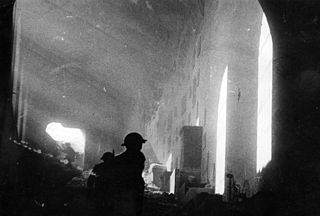
The Battle of Monte Cassino, also known as the Battle for Rome, was a series of four military assaults by the Allies against German forces in Italy during the Italian Campaign of World War II. The objective was to break through the Winter Line and facilitate an advance towards Rome.
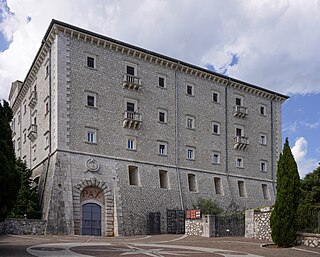
Monte Cassino is a rocky hill about 130 kilometres (80 mi) southeast of Rome, in the Latin Valley, Italy, 2 kilometres west of Cassino and at an elevation of 520 m (1,710 ft). Site of the Roman town of Casinum, it is widely known for its abbey, the first house of the Benedictine Order, having been established by Benedict of Nursia himself around 529. It was for the community of Monte Cassino that the Rule of Saint Benedict was composed.

Westerplatte is a peninsula in Gdańsk, Poland, located on the Baltic Sea coast mouth of the Dead Vistula, in the Gdańsk harbour channel. From 1926 to 1939, it was the location of a Polish Military Transit Depot (WST), sanctioned within the territory of the Free City of Danzig.
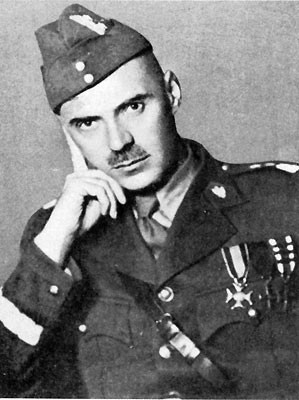
Władysław Albert Anders was a Polish military officer and politician, and prominent member of the Polish government-in-exile in London.

The 2nd Polish Corps, 1943–1947, was a major tactical and operational unit of the Polish Armed Forces in the West during World War II. It was commanded by Lieutenant General Władysław Anders and fought with distinction in the Italian Campaign, in particular at the Battle of Monte Cassino. By the end of 1945, the corps had grown to well over 100,000 soldiers.

The Battle of Westerplatte was the first battle of the German invasion of Poland, marking the start of World War II in Europe. It occurred on the Westerplatte peninsula in the harbour of the Free City of Danzig.

Stefan Wyszyński was a Polish Catholic prelate who served as Archbishop of Warsaw and Archbishop of Gniezno from 1948 to 1981. He previously served as Bishop of Lublin from 1946 to 1948 He was created a cardinal on 12 January 1953 by Pope Pius XII. As Archbishop of Gniezno, Wyszyński possessed the title, "Primate of Poland".

Henryk Sucharski (1898–1946) was a Polish military officer and a major in the Polish Army. At the outbreak of World War II, he was one of the commanders of the Westerplatte position in Gdańsk, which troops under his command defended for seven days against overwhelming odds. Sucharski survived the war.
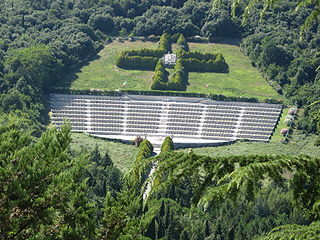
The Polish war cemetery at Monte Cassino holds the graves of 1,072 Poles who died storming the bombed-out Benedictine abbey atop the mountain in May 1944, during the Battle of Monte Cassino. The cemetery is maintained by the Council for the Protection of Memorial Sites of Struggle and Martyrdom.

The Monte Cassino Commemorative Cross is a commemorative medal awarded to all soldiers of the Polish II Corps who fought in the battle of Monte Cassino and the battles for Piedimonte and Passo Corno. After the capture of Monte Cassino in May 1944, the Polish government-in-exile created a campaign cross to commemorate the role of the Polish II Corps in capturing this strategic point, which had long blocked the Allied advance up the Italian peninsula.

Casamassima is a town and comune of 19,786 inhabitants in the Metropolitan City of Bari, in Apulia, southern Italy. Is also called "The Blue Town". The town is located inland from the Italian coastline, thrives and is built on agriculture, primarily that of wine, olives and almond production. Founded around the seventh and eighth centuries, the village started as a Roman encampment, according to legend.

Czerwone maki na Monte Cassino is one of the best-known Polish military songs of World War II. It was composed in May 1944 in Italy, during the Battle of Monte Cassino, on the eve of the Polish Army's capture of the German stronghold.

The Cassino War Cemetery is a war grave cemetery in the commune of Cassino, Province of Frosinone, 139 kilometres (86 mi) south-east of Rome, Italy.
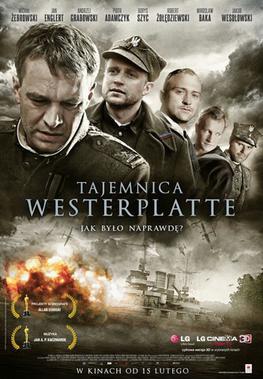
1939 Battle of Westerplatte, originally titled in Poland as Tajemnica Westerplatte, is a 2013 Polish-Lithuanian war film written and directed by Paweł Chochlew. It portrays the Battle of Westerplatte between the Polish Army and Nazi German forces at the start of World War II in 1939. The film focuses on the conflict between Westerplatte commander Henryk Sucharski and his deputy Franciszek Dąbrowski.

Italy–Poland relations are cultural and political relations between Italy and Poland. The strong historical ties between both countries, such as the Roman Catholic religion and common fights for independence, have caused many to call the relationship the Polish–Italian brotherhood.

Polish Cemetery in Bandar-e Anzali is a cemetery in Bandar-e Anzali northern Iran. It was made during Evacuation of Polish civilians from the USSR in World War II. This war cemetery contains the remains of 163 graves of the Polish soldiers of the Anders' Army and 476 graves of the Polish civilians who perished due to sickness during their transport to the Middle East, for a total of 639 graves. Bandar-e Anzali is the port where the Polish Anders' Army disembarked, in an operation that lasted from April 1, 1942 until October 1942, after evacuating from the USSR.

The Polish Cemetery in Tehran is a historical cemetery situated in the eastern suburbs of Tehran, Iran, part of Doulab Christian Cemetery of Tehran. It was made during Evacuation of Polish civilians from the USSR in World War II. This cemetery contains the remains of 2,192 graves of the Polish civilians who perished due to sickness during their transport to the Middle East.

Stanisław Sylwester Alfonzy Grodyński - Polish soldier, lawyer, local government administrator and senior military intelligence adviser\officer.

Leon Pająk was an officer in the Polish Army who fought in the Battle of Westerplatte during the Invasion of Poland in 1939. He was awarded the Order of Virtuti Militari.




















